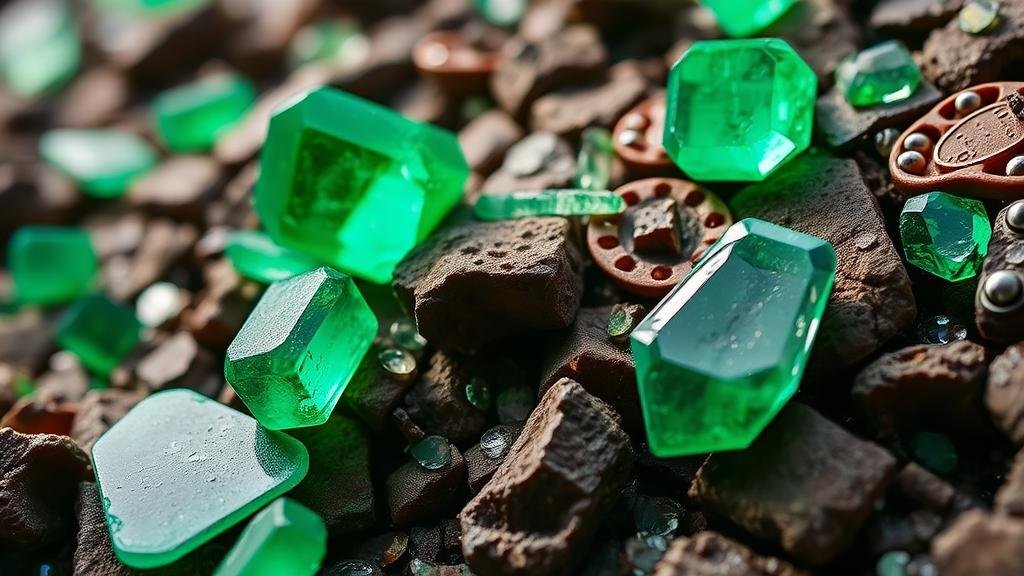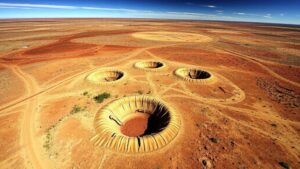Emeralds in the Andes: Following the Stories of Lost Incan Mines
Emeralds in the Andes: Following the Stories of Lost Incan Mines
The allure of emeralds is timeless, captivating the hearts of collectors and jewelers alike with their deep green hue and unparalleled brilliance. Among the most storied sources of these precious gemstones are the Andes Mountains in South America, steeped in rich history and legend. For rockhounds and mineral collectors, exploring the fabled tales of lost Incan mines provides an exciting journey into both the geological and cultural significance of emeralds in this captivating region.
The Historical Significance of Emeralds in the Andes
Emeralds have been treasured for centuries, especially in ancient civilizations like the Incas, who considered them sacred. believed that the gems represented rebirth and fertility, often associating them with the earth goddess Pachamama. The most famous source of Incas emeralds is said to be the “Lost City of the Incas,†often linked to mines located in modern-day Colombia and the Andes.
The Fabled Mines
Many legends talk about hidden Incan emerald mines nestled deep within the Andes, which some believe were abandoned during the Spanish conquest. The exact locations of these mines have remained elusive, sparking the imagination of adventurers and gemologists alike. Folklore suggests that some settlements had emeralds so large they could weigh as much as 50 carats or more, although much of this remains unverified.
Modern Discoveries
In recent decades, mining operations have unearthed emeralds across various regions of the Andes, especially in Colombia, which is home to the worlds most significant emerald deposits. Notably, the Muzo and Chivor mines are both recognized for producing some of the finest quality emeralds, often exceeding a clarity of VVS (Very Very Slightly Included), a standard highly valued by collectors.
Geological Formation of Emeralds
Emeralds are a variety of the mineral beryl, characterized by their green hue due to traces of chromium or vanadium. In geological terms, emeralds typically form in metamorphic rocks known as schist and in hydrothermal veins. This unique formation process requires specific temperature and pressure conditions, making the Andes an ideal location for emerald development due to its complex geological history.
Key Statistics on Emerald Formation
- Emeralds generally form at temperatures between 300°C to 500°C.
- The specific gravity of emeralds ranges from 2.67 to 2.78.
- Emeralds typically have a hardness of 7.5 to 8 on the Mohs scale.
Collecting Emeralds: Tips for Rockhounds
For rockhounds and mineral collectors interested in emeralds, there are practical steps to ensure successful collecting, whether through prospecting or purchasing. Here are several tips to consider:
Find Reputable Sources
Ensuring that you acquire emeralds from reliable dealers or established mines is crucial. Look for certification from gemological laboratories that confirm the quality and authenticity of the gemstones.
Understand the Grading System
Familiarize yourself with the standards used in grading emeralds, which include:
- Color: The most important factor is the hue, tone, and saturation of green.
- Clarity: Emeralds usually contain inclusions known as jardin, which can influence their beauty and value.
- Cut: The fashioning of the emerald influences its sparkle and overall appearance.
- Carat Weight: Larger stones generally attract higher prices.
Stay Informed on Legalities
When prospecting for emeralds in the Andes, be aware of the local mining laws and regulations. Some areas may require permits, so it is essential to respect the legal frameworks and local customs surrounding mining activities.
Emeralds in the Marketplace and Beyond
The market for emeralds continues to thrive, with demand increasing across global luxury sectors. Recent estimates indicate that the emerald market is expected to grow at a rate of 5.2% per year, fueled by rising consumer interest in sustainable and ethically sourced gems.
Real-World Applications
Emeralds are not only appreciated for their beauty but also have applications in various sectors:
- Jewelry: The most common use, adding a touch of elegance to rings, necklaces, and earrings.
- Investment: High-quality emeralds are considered a significant investment and can appreciate in value over time.
- Historical Context: Studying emeralds can provide insights into the practices and cultures of ancient civilizations, particularly the Incas.
Conclusion: The Journey Awaits
The stories of lost Incan mines in the Andes fuel the ongoing quest for emeralds, making them a tantalizing target for mineral collectors. By understanding their historical significance, geological origins, and the intricacies of collection, rockhounds can embark on their journey with knowledge and appreciation for these majestic gems. With a wise approach to sourcing and collection, the dream of uncovering an emerald could soon be a reality.
As you venture into this exciting world, remember to equip yourself with knowledge, respect local cultures and regulations, and prepare for a rewarding discovery in the vibrant landscape of the Andes.


